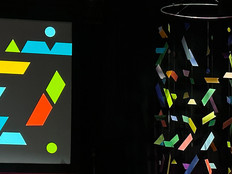Why Virtual Help Desks Improve IT Services
IT departments at colleges and universities move beyond the traditional help desk.
What comes first when IT departments strive to develop customer-focused organizations? Is it buy-in from top management or the software tool?
At George Mason University in Fairfax, Va., the two concepts work hand-in-glove. Top IT management sees to it that the IT staff receives customer service training (see the sidebar below), and BMC Remedy Service Desk Express keeps them organized so everyone is on the same page.
Teresa Gibbons, support center manager for the university's IT Unit, says that in the past, users were supported in a somewhat haphazard manner.
“A customer may have called or e-mailed a particular technician or engineer that they had worked with in the past to ask for help,” Gibbons says. “The question may or may not have been one that the technician could answer, and different people may have given different answers. Requests weren't always tracked, so we didn't know if we had responded to the customer.”
Now, GMU runs on a single-ticket system using Service Desk Express.
“If a user reports a problem, a technician can put in a ticket and anyone else who works on that issue can see the call history tracked in the software,” says Deputy CIO Walt Sevon.
“In the past, all the checks were not communicated,” he says. “That's not customer service, and that's not what we're striving for here.”
65%
The percentage of organizations that collect formal end-user feedback
Source: Info-Tech Research Group
Russ Conwath, senior research analyst at Info-Tech Research Group, says that a well-run help desk and IT organization focused on customer service can reduce user downtime by as much as 50 percent.
“When the IT organization is bogged down with trouble tickets, it takes time away from everyone,” Conwath says. “When there are not as many help-desk tickets, your Tier 2 and Tier 3 people can work on new applications and services.”
Conquering Geography
For the IT staff at the University of Hawaii, improving customer service has less to do with managing help-desk tickets and much more to do with accommodating the university's unique geography and its ramp-up of online courses.
“The university is spread out across six islands, so we need a tool that makes it easy for us to handle user calls without having to send an IT person to a physical location,” says Mitchell Ochi, help-desk supervisor and IT specialist.
“Plus, as we increased our online offerings, we needed to support students who might not be from Hawaii,” he adds. “Our online students are from all over the world.”
The solution was GoToAssist, a remote management tool from Citrix. Once given permission from the user, the software lets a help-desk technician take over a user's desktop to diagnose the problem.
Along with making the help desk more efficient, Ochi says GoToAssist improves customer service in other ways. The tool lets his technicians do remote software installs as well as check for and clean out spyware. They can also help students fill out online paperwork and train them to use applications.
“If a student is having a problem filling out a registration form online, we can take over the computer and walk them through the process, then run a demo on some of the website's basic services – for example, how to add or drop a course,” he says. “And for foreign students working in a foreign-language version of Windows, we can point to the start button and walk them through an application.”
Remote Control
Jim Bostick, director of user services at Virginia Commonwealth University in Richmond, says his college has improved customer service using LANDesk remote management.
“LANDesk lets us take remote control of the desktop,” says Bostick. “Frequently, customers are not tech savvy and can't explain what the problem is. So once we have permission, we can go in and see what's going on in the machine.”
Armed with this remote-management tool, Bostick says the university's help desk now resolves 81 percent of users' problems during the first call.
Simple tools developed in-house also let the help-desk staff be more proactive. For example, in the past, when a student had a problem logging on to an online course on Blackboard, there was no way the help-desk staff could help him.
Typically, when a student reported a problem, Bostick says it had more to do with the professor not knowing how to register the course properly than with the student enrolling incorrectly. Using the in-house tool, the help-desk staff can now help professors register their courses and train them on the basics of registration.
“Now, if a student calls in with a problem, the help desk can check and see if the course was made available in the first place,” Bostick says. “This takes the simple troubleshooting calls away from the Blackboard staff, which is now free to work on maintaining the course management system and adding new applications.”
That's what IT departments should strive for, he says.
Network technicians and applications developers are expensive, Info-Tech's Conwath points out. That's one of the primary reasons why IT departments are turning to tools that can make their Tier 1 help-desk people more effective and allow upper-level technicians to work on new applications and services.
When that happens, customer satisfaction scores soar.
When Customer Service Counts
Every year during the first full week of October, George Mason University participates in National Customer Service Week. Recognized by a congressional proclamation in 1992, the annual event is held to honor customer service professionals nationwide and provide opportunities for professional development.
All IT Unit staff members participate in seminars on customer service throughout the week. Each year a theme is selected, and teams from various departments compete to best exemplify the theme. Last year's theme was “Superheroes: ITU to the Rescue.”
Teresa Gibbons, ITU support center manager, says the special event is one of several moves by IT management to encourage customer service. The unit also holds meetings twice a year that focus on customer service. And throughout the school year, the university's Human Resources Department offers courses in customer service to the IT staff. Gibbons encourages all ITU staff members to take the course, not just help-desk workers.
5 Customer Service Tips
Focus on service first: Get your people to start thinking that they are managing services as opposed to software and gear.
Seek out service champions: Find people who buy into the service mission and place them in important positions. Give them the freedom to lead by example, and they will make converts.
Spend time operating the help desk: This works especially well for CIOs and top IT managers. Go into the trenches and tell the users who call in that you are the CIO and are really interested in their problems. Most people will appreciate your concern. It's also a great way to find out what's happening with your users and your team.
Hire people with patience: The most technically adept person is of no use to your organization if he or she can't work with people. When you conduct interviews, ask prospective hires to talk about how they've solved technical issues in the past. The answers can be quite revealing.
Find the right tools: Software matters, and can be a catalyst for getting people to work together. Look for tracking tools and software that offer remote management, patch management and security features.
Sources: Info-Tech Research Group, George Mason University
Embedded IT
At the University of Florida in Gainesville, Mike Conlon's focus is on getting IT people embedded with the academic departments.
To help make that happen, the associate CIO for IT architecture uses BMC Remedy Service Desk Express, allowing his team to more effectively track trouble tickets.
At many IT organizations, Tier 1 people work on the help desk and take the initial calls, Tier 2 people work to resolve issues with applications, and Tier 3 technicians (who are often certified engineers) handle complex applications and networking issues.
Conlon says that for the past five years, the university has been moving to a different model. The Tier 1 staff runs the traditional help desk, and the Tier 3 team still tackles the toughest problems, but Tier 2 technicians work in the colleges and are assigned to specific academic disciplines.
“I was with a workstation support person at our Emerging Pathogens Institute the other day, and it struck me that our person really knew what those people do for a living,” says Conlon. “That's what I call customer support, when your people are fully blended – on the ground and members of the team.”







